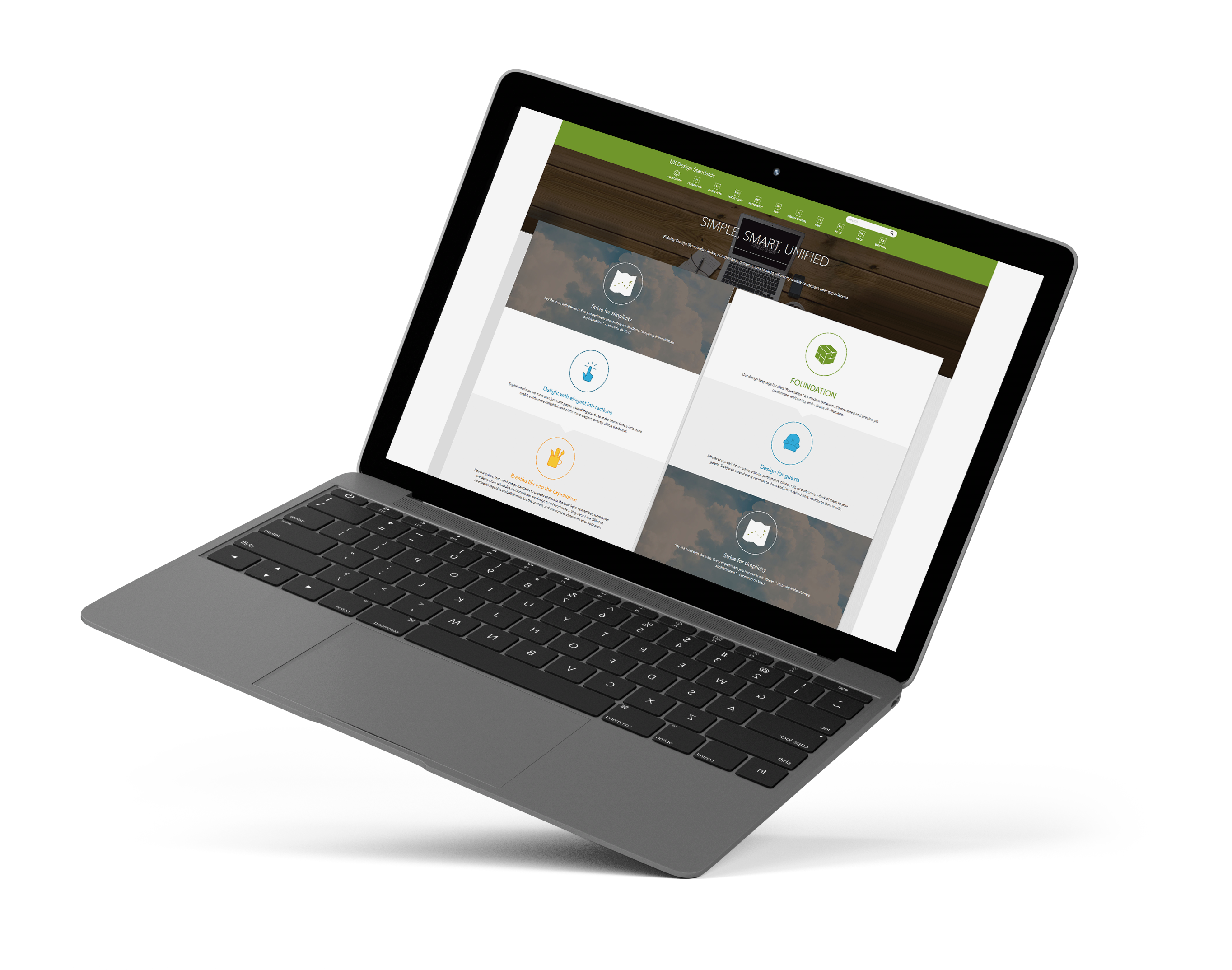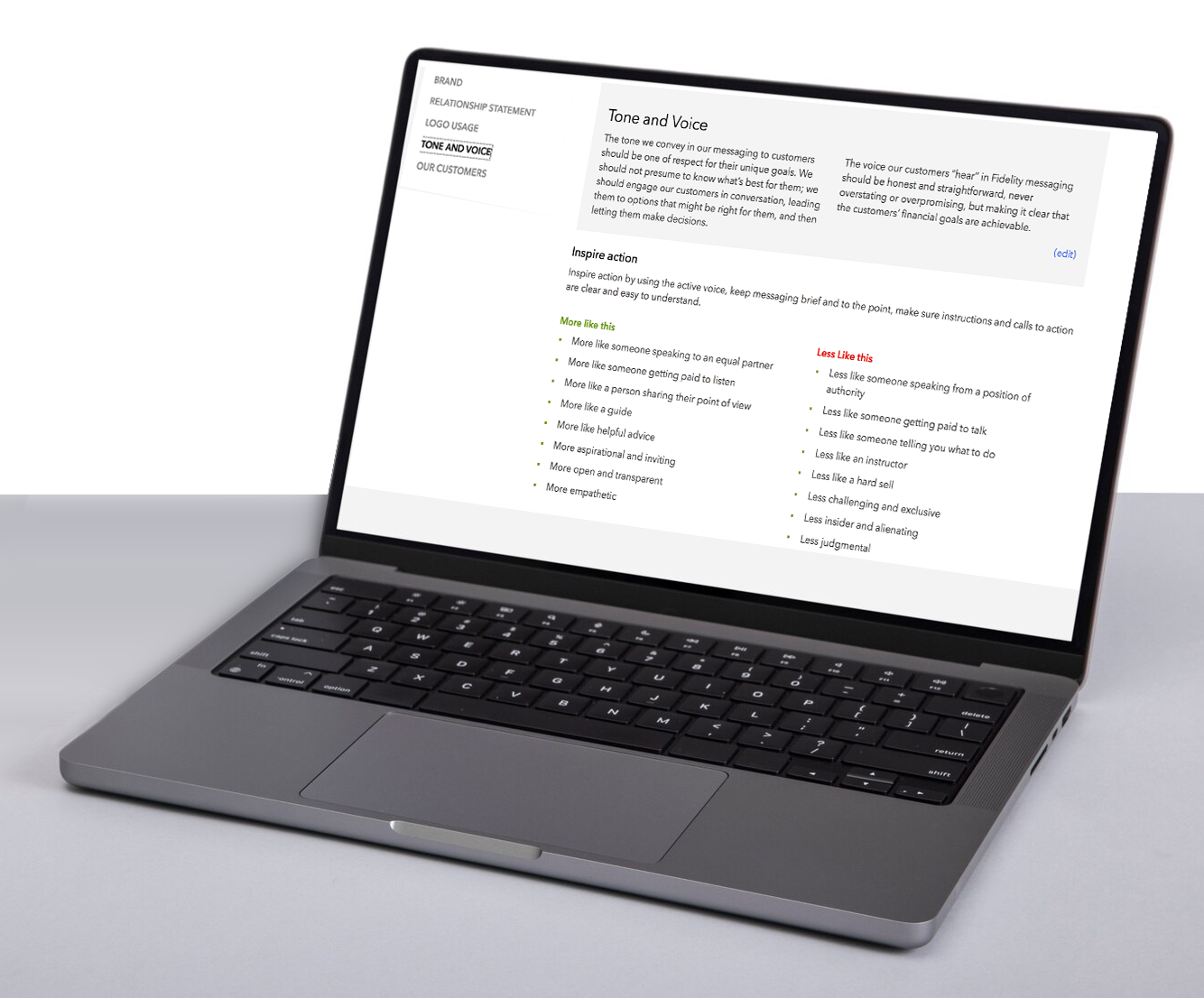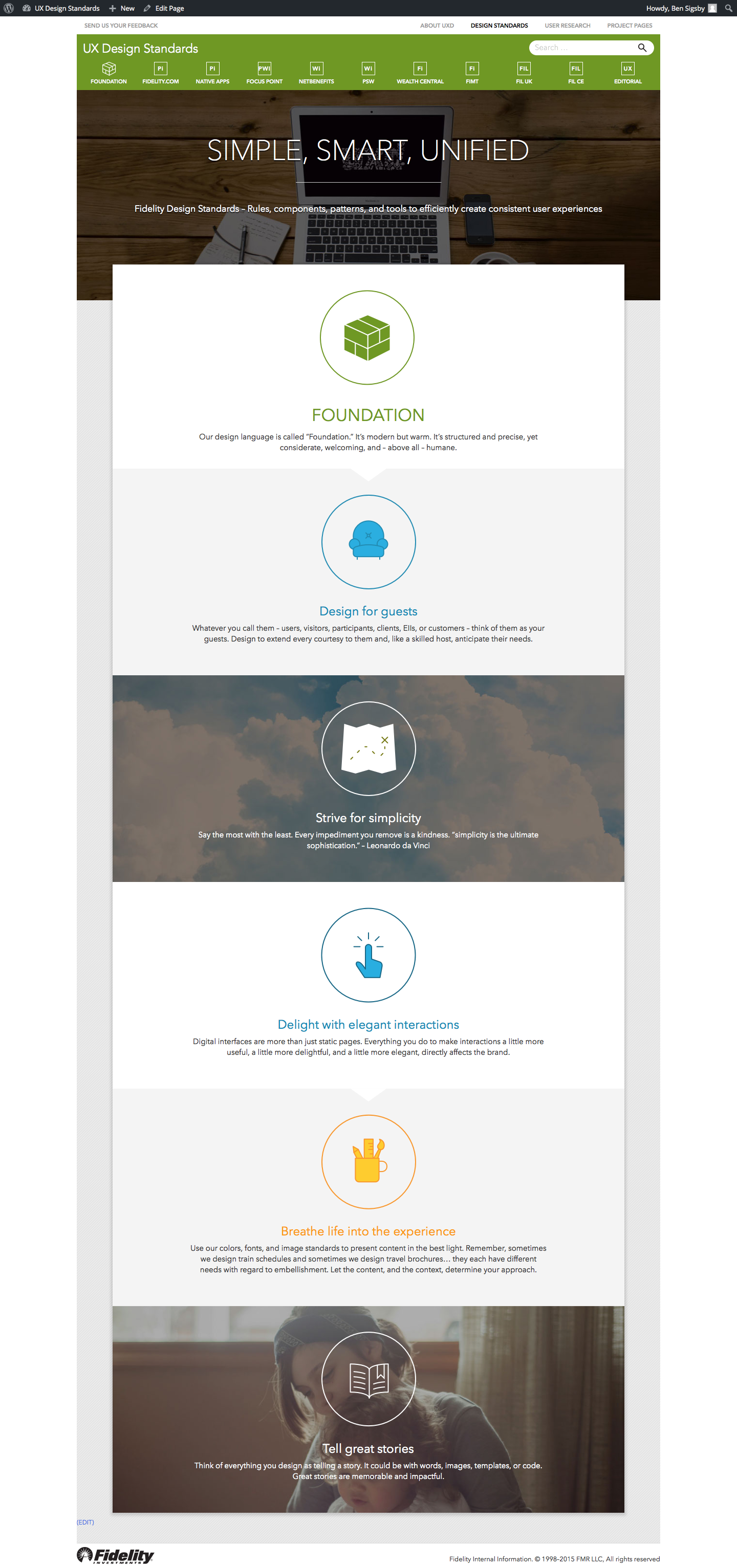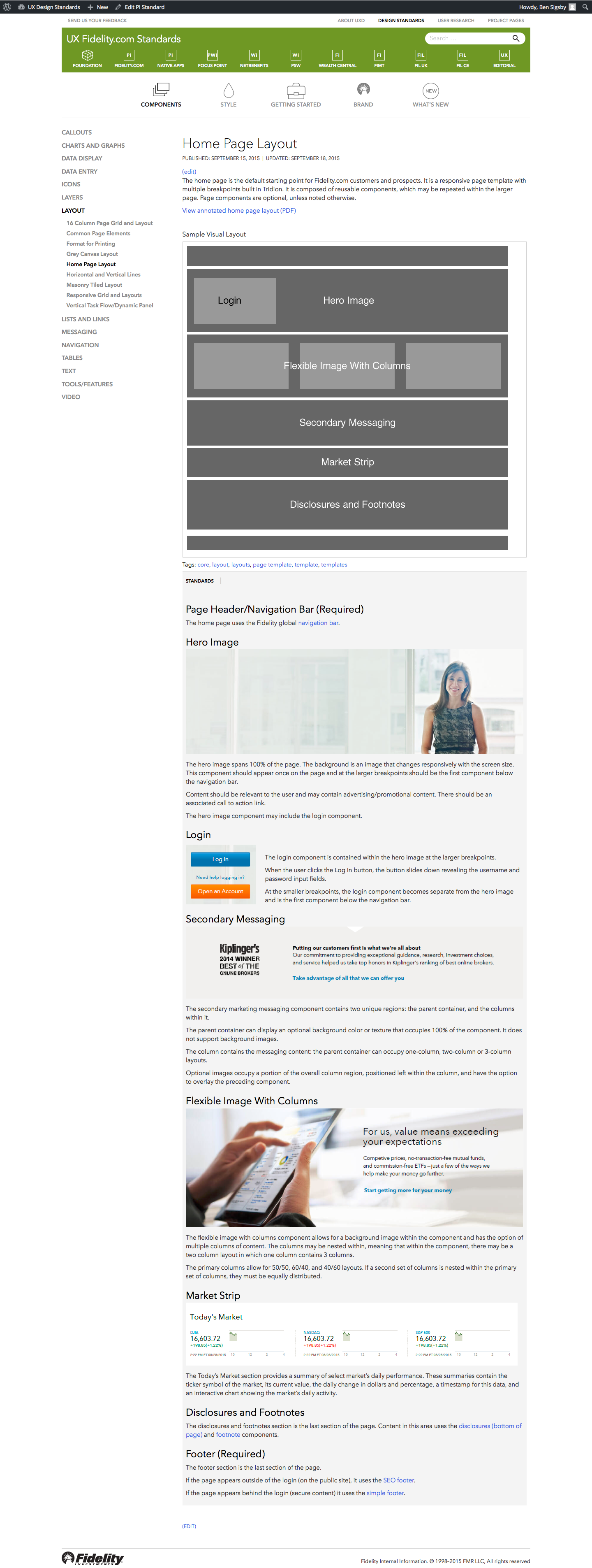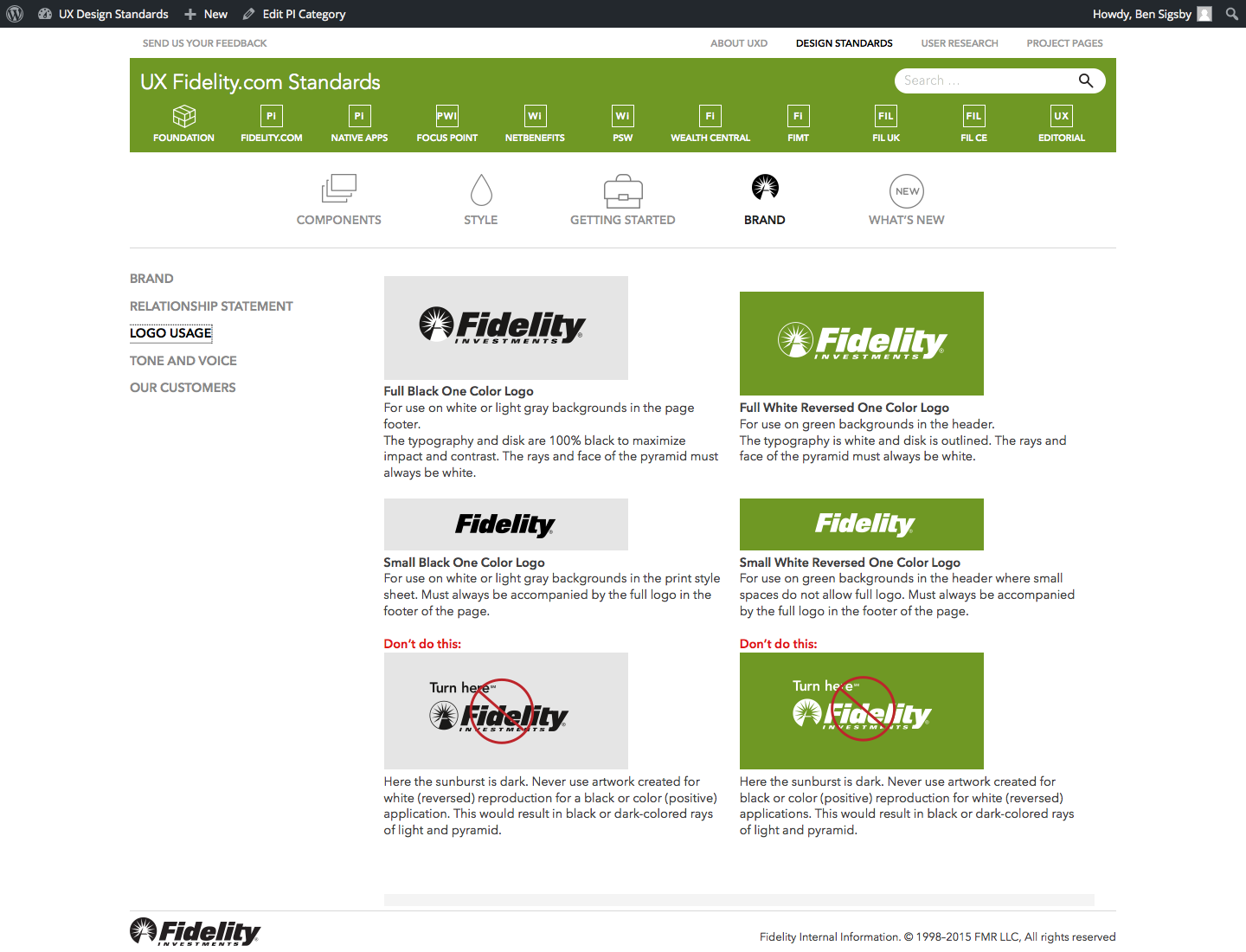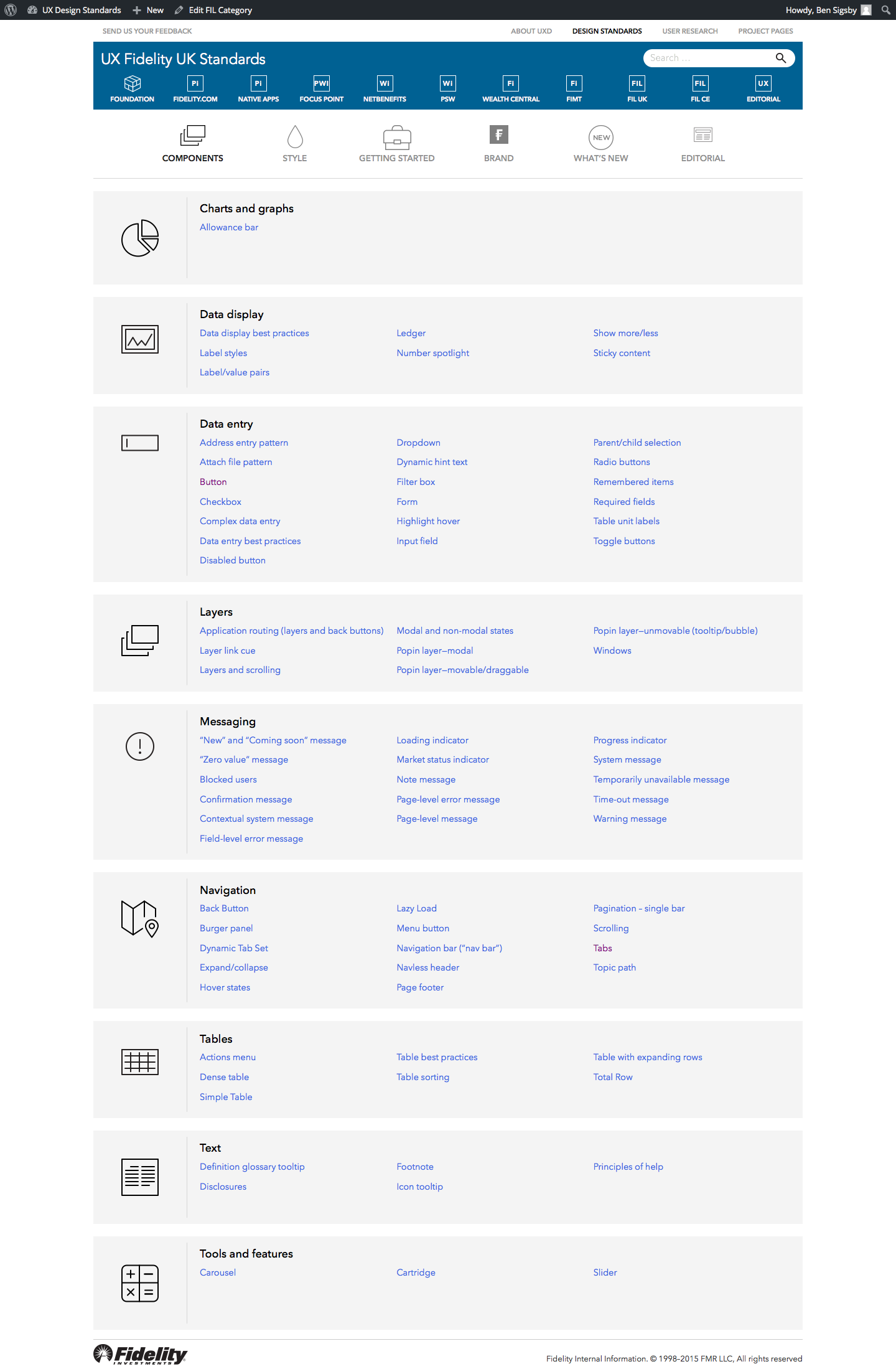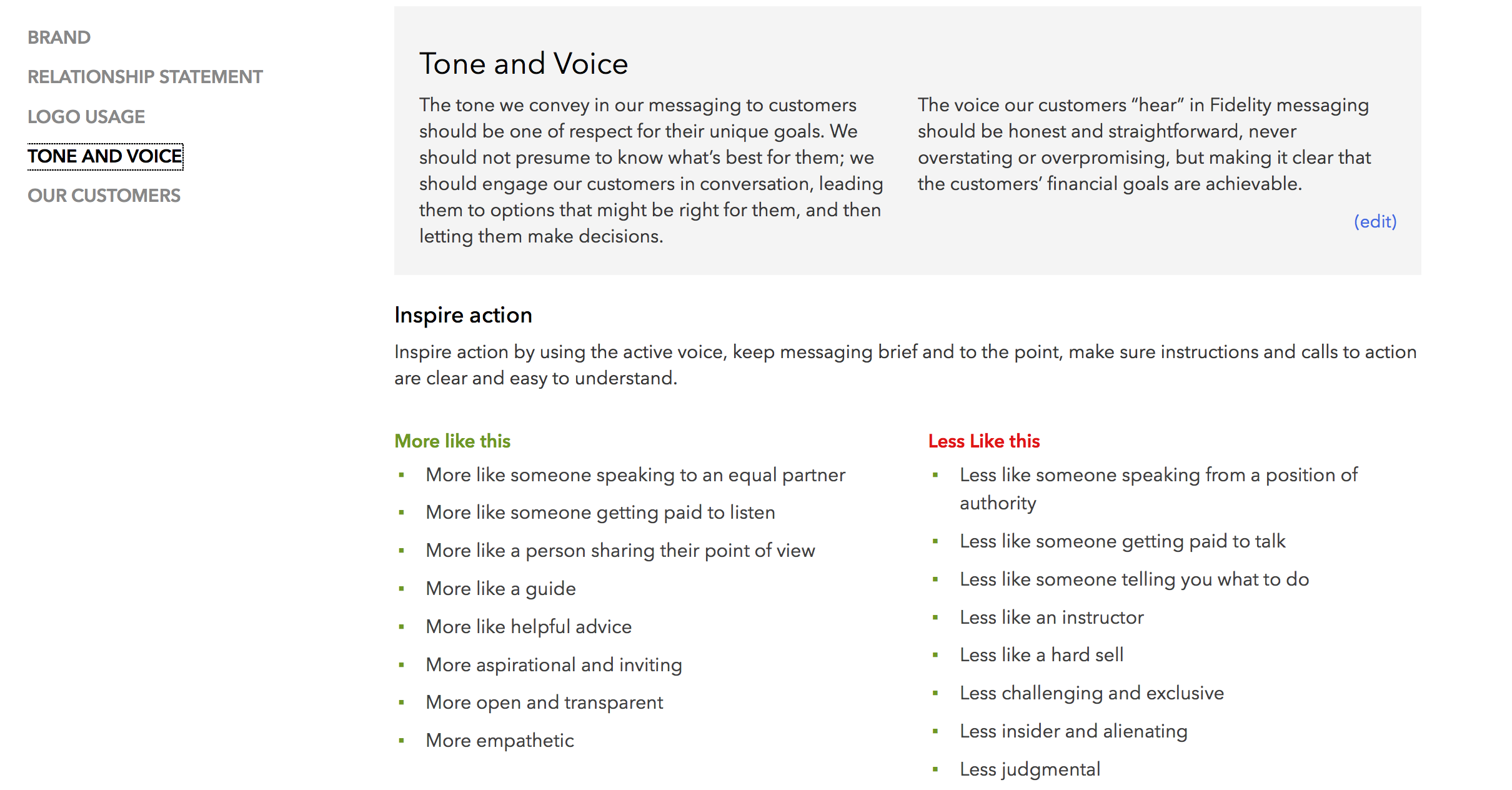Fidelity UX Design System Governance
300+ Designers
80+ projects
3 Businesses
1 Cohesive User Experience
Managing a large and complex design system requires oversight and socialization. Not all design concepts are appropriate for universal use. Good ideas are hard to disseminate. The governance process I designed and managed addressed these problems and more.
Overview
Audience
There were three audiences for our governance process:
- Design leadership recognized the need to manage which ideas were repeatedly used throughout our projects
- Design practitioners wanted to spread their good ideas, get credit for their work, and work efficiently
- Business and tech partners wanted visibility into the standards that they were almost certainly going to try to break
Role
I designed, implemented, and facilitated multiple design governance processes across the numerous groups in Fidelity’s UX department. When a new portfolio appeared that needed to utilize or create a design system, they called me.
Design Process
My leadership on this project focused on:

Scalable design systems
Management across multiple sites
Design process management
Design critique moderation
Leadership by informal influence
The simplest form of governance simply formalized the design deliverables into documented standards. In these situations, the design teams didn’t really require much management. Instead, they wanted to have a design platform to lean on when their deliverables were questioned. Linking these standards to testing data made them rock solid.
Larger design teams often struggle with knowledge sharing. A public governance process help to communicate best practices by proposing them as standards, complete with the rationale and research that supports those designs. For this level of governance, design round table meetings focus on updates to the design standards proposed by the project teams for the project teams.
The added benefit of this more democratic approach to governance is that the designers have real ownership of the standards. Designers are proud when their great idea appears in three other areas of the site – and all they had to do was talk about it at governance. When this shared value is recognized via end-of-year reviews and other personal benefits, design standards proposals start to come out of the woodwork.
When I established and facilitated this style of governance process, attendees would often report that this meeting was where they learned the most about what work was happening outside of their projects. This session was one of the most highly attended forums in the department due to the vibrant and engaging design discussions.

